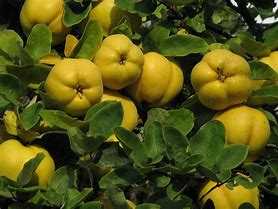With plants that bear fruit, some 19 and 20th century specimens seem to have folded in popularity. Their flora underappreciated and fruit not harvested. It can only be a good thing if these are encouraged more into open spaces and marketed to make a comeback along with the currant and berries that most of us consume.
Pyrus communis (Wild Pear) Native to the UK but seems to have fallen out of fashion. No special treatment for this plant. It is largely independent of care. It is reliable for fruiting and flowers between April and May. The only condition it will ask of you is that it goes in full sun.
Emperium nigrum (Crowberry) It is evergreen providing winter interest as a food source and for the look. In autumn it bears berries which are edible, a little acidic though. It is well suited to moist, shaded areas and used as effective ground cover or in a rock garden. It is native to moorlands so these conditions are ideal.
Rubus caesius (Dewberries) Black berries are borne. Robust and good in adapting to poor soil. It prefers rocky terrain with little or no nutrients. What goodness it needs it will draw itself.
Chaenomeles japonica (Quince) A summer fruit. The flowers will come in mid spring and are usually appreciated more than the fruit. An underrated shrub now and adorns very delicate flowers. They do have very thorny stems though which makes many just leave it alone when they inherit it through outdoor space. Their use was maximised in the 19th and 20th Century but seems now to have been forgotten as a staple for puddings and jams. A quince has more vitamin C than a lemon yet not used in the main. Quinces do not welcome a shaded or secluded spot or wet conditions. A free draining environment is preferred. In addition, a full sun aspect is better with warmth and not exposed to frost or wind. it is a good idea to thin the plant after it’s fruit yield and removed dead, diseased branches. Since it likes to retain the moisture it needs less sandy or chalky soils with organic matter added if necessary.
Sorbus aucuparia (Rowan) The berries are borne mid – late summer and in spring offers an abundance of white flowers. It is of benefit to both insects and birds too. The berries are edible although a touch on the sour side.
Prunus spinosa (Blackthorn – Sloes) The flowers will appear in early spring March onwards, the fruit is borne in early autumn that being August – September. Their main characteristic are very large spines off the branch. It can be used as hedging because of their thorny exterior. They do benefit from being left to their own devices – pollination by insects. They bear white, creamy flowers and adorned with fruit in autumn and so do have a dual purpose. They are larger specimens (more trees) and generally are found in woodland areas so container planting is obviously not an option!
Vaccinum oxycoccos (Cranberries) A pink berry climbing vine, it can be planted in containers and trained. It can also be used ground cover, these autumn fruits are known to most (Ocean Spray) but to grow they are relatively straightforward. The only downside is they take a little time to establish themselves usually after two years start to do anything. These tend to be less spiky and have more hairy stems. Pruning is minimal and in spring all that is required is to remove straggly off shoots and thin a little. They have pink flowers and a purple spike protruding from the mainstem. The fruit usually by September- October. It is an evergreen so once the flowers have spent, the fruit is borne, the leaves have yet to still go a reddish colour and provide winter interest. The growing conditions are similar to Rhododendrons so they prefer ericaceous (acidic) soil. The soil needs to be sandy more than anything else. Irrigation needs to be consistent but able to free drain.
Ribes grossularia (Gooseberries) They have been cultivated for example, ‘invictus’ AGM but known more in their wild state. Because of its growth habit they are found as overgrowth and missed on inspection. Very easy to encourage and generally most soils will please the plant. Gooseberries do prefer direct sun or they will not bear fruit. The stems do tend to be thicker but unfortunately no less spikey. The gooseberry is ideal for smaller gardens since they can be grown as a shrub, trained up a wall and even cultivated in a container. They do like some moisture and although tolerate dry spells if container bound irrigation is needed. The fruit is born mid- summer and can be used for a variety of culinary purposes.


